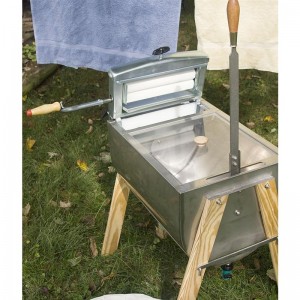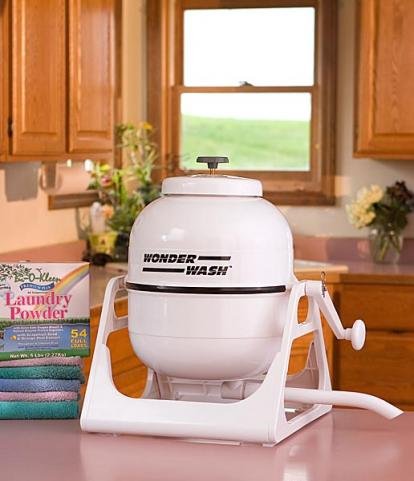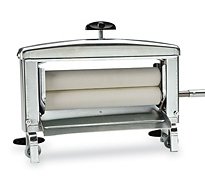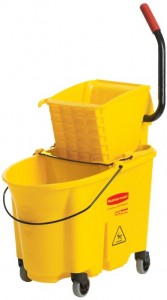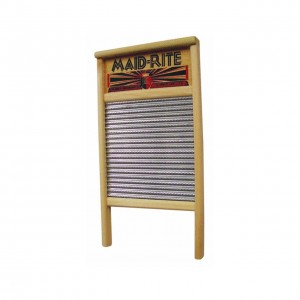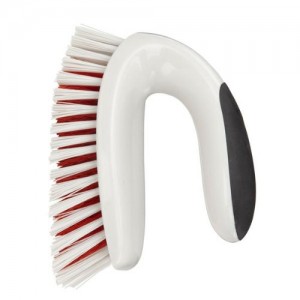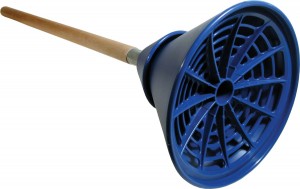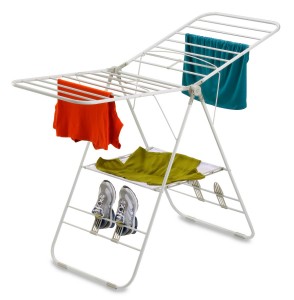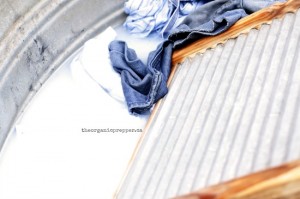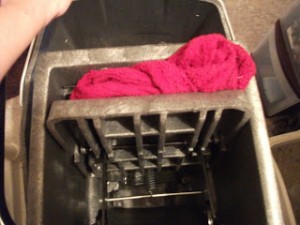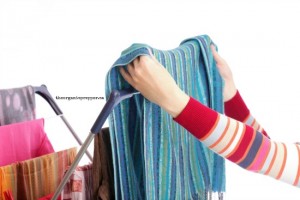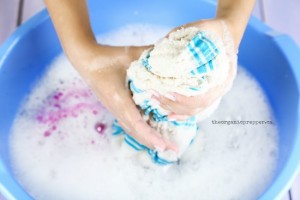 When you think about economic collapse, you probably envision all sorts of issues: food shortages, soup lines, people living in their cars, and abject poverty.
When you think about economic collapse, you probably envision all sorts of issues: food shortages, soup lines, people living in their cars, and abject poverty.
But the reality is, many of the things that will personally affect you are those day-to-day conveniences that we take for granted. So many things are automated in our modern way of life that we don’t even consider what our ancestors had to do to keep their homes running smoothly.
Most of us prepare so that we can smoothly deal with whatever comes our way. Part of the Preppernomics series will discuss day-to-day tasks that may change for us in the near future. This week, we’re going to talk about doing your laundry without the help of a washer and dryer.
Why would you need to do this?
We all know that anything that can go wrong, often does go wrong. While you may have a perfectly functioning washing machine now, that doesn’t mean it will always be available.
- What if water is rationed? It takes about 30-45 gallons of water to do a load of laundry in a machine.
- What if the power goes out?
- What if your washing machine malfunctions and you can’t afford to fix it?
- What if you depend on the laundromat, but you’re out of money?
- What if you can no longer stay in your home for some reason, and the place you’re staying doesn’t have a laundry facility?
- What if you’re simply trying to cut all costs to the bare minimum, including limiting your use of public utilities?
In any of the above scenarios, being able to do your laundry by hand is a good skill to have. There’s more to it than dunking your clothes in some soapy water. Read on for complete instructions.
If you’ve never washed a load of clothing by hand, it can seem like a daunting task when you’re faced with a pile of dirty sheets, jeans, and stained socks. We had to do this up at the cabin for the first 6 months we lived there, until we finally (thankfully!) got a washing machine. It’s hard work – the wet laundry is heavy, wringing it out is hard on your hands, and it’s time-consuming to scrub each item separately. There are some shortcuts and pieces of equipment that can make it easier. It’s a good idea to gather these specialty items now, when times aren’t as tough and they are easily accessible.
Creating Your Off-Grid Laundry Facility
There are a few pieces of equipment that can greatly lessen your work. In the old days, the lucky family had a washing machine similar to this one:
In fact, you can still get one of those if you happen to have $729.00 plus$100 shipping lying around. Check out Lehman’s if this is within your budget, because it’s truly a great machine.
However, for the rest of us, there are other options.
Wonderwash Mini Washing Machine
My life would have been so much easier during those 6 off-grid months if I had owned one of these at the time. Not only are they much easier to use than leaning over the bathtub with a scrub brush, they use a lot less water. This machine uses about 1-2 gallons per load. You can’t do a huge load – maybe 4-6 clothing items at a time, but the ease of use means that you still get done faster than doing one big load manually. You can also easily collect your graywater by placing the spout over a reservoir. I love mine! I used it during a recent power outage to immediately wash a white shirt that had a cup of coffee spilled on it. The shirt came out spotless in just a few minutes.
It doesn’t spin your clothes so you still have to wring them out – more on the wringing below.
Best of all, at the time of this posting, this washing machine is less than $50 at Amazon, with free shipping. You really want this machine. Trust me.
Clothes Wringer
If you have one of those large plastic or metal laundry room sinks – the freestanding kind, this wringer will clamp onto the side for you. I haven’t been able to swing one of these yet, but it would certainly make life easier. The worst part about doing laundry by hand is, to me, the wringing. My hands used to ache by the end of a load of jeans or sheets, and they still dripped everywhere, even after wringing them for what seemed like ages.
It’s pricey at $175 (at time of posting) but it’s well worth it if you can afford it. The reviews at Amazon are excellent.
Commercial Mop Bucket
For those of us with a smaller budget, a janitor’s bucket works well for wringing out clothing. You’ll still need to do a small amount of wringing by hand, but it will be far easier than doing the whole process by hand.
I like this option because it can serve multiple purposes, it’s on wheels so it’s way easier to move your gray water to where you want it, and it’s a far lower price than the wringer above. If you never take another piece of advice that I offer, take this one. GET A COMMERCIAL GRADE MOP BUCKET. You might be tempted to try and save a few dollars with a less expensive bucket. Don’t do it! It will NOT hold up to the rigors of laundry. The wringers on commercial buckets are built to much higher standards and made of heavier materials than the cheapo buckets at your local Wal-Mart.
This one is very similar to mine and is less than $65 at the time of posting. Amazon is offering free shipping on this product.
Washboard
For those extra dirty items (like socks) nothing will get them cleaner than an old-fashioned washboard. I don’t recommend the plastic ones that are built into a small tub. If you have a large item like a pair of jeans or a towel, it’s difficult to maneuver your laundry with those. This one is super-sturdy and is made of wood and galvanized steel. It’s very vintage looking and makes a nice decorative statement on your laundry room wall, too.
At the time of this posting, this washboard is less than $25 on Amazon (with free shipping.)
 Scrub Brush
Scrub Brush
I love this scrub brush. The design of it really saves the wear and tear on your knuckles, which can be substantial when you’re doing your laundry by hand on a daily basis. It’s $6 at the time of posting, with free shipping from Amazon.
Agitator
This contraption resembles a toilet plunger, but you can see on the bottom that it’s specially designed to pull water through the fabric. It really helps get your clothes much cleaner if you’re doing them by hand in a tub or bucket. (The ad says this can be used in a 5 gallon bucket, but I’ve personally only used it in a bathtub full of laundry.)
This agitator is less than $20 at the time of this article, with free shipping from Amazon.
Clothes Drying Rack
A drying rack is not an absolute necessity, but depending on the time of year, your set-up, and how well you wring things out, it can be a definite boon to your off-grid laundry set-up. This particular design can hold an entire load of laundry in a very small amount of space. Ours sits in the bathtub, hidden behind the shower curtain. I use it all the time, not just during grid down scenarios, for those items I don’t want to put in the dryer.
The heavy-duty drying rack displayed is just under $30 on Amazon, with free shipping.
How do you wash clothes by hand?
Let’s go with the most minimal amount of supplies possible. You can use your bathtub, laundry tub, kitchen sink, or a couple of large buckets.
First, gather your supplies:
- Laundry soap of choice (I use my homemade laundry soap)
- Baking Soda
- Hydrogen Peroxide
- Sturdy scrub brush
- Small bucket (I use a clean plastic kitty litter bucket)
- Janitor’s bucket with a press wringer
- Drying rack and clothespins (or method of choice)
Once you have your supplies gathered, you’re ready to wash clothes!
Here is the step-by-step:
- Fill your tub. Whatever container you’re using for laundry, fill it with hot soapy water and put in your laundry.
- Let it soak. You can let the laundry soak anywhere from half an hour to overnight. Unless your clothes are very, very dirty, you won’t have nearly as much scrubbing to do after this.
- Agitate the laundry. I have used a broom handle for stirring the laundry around, but there are items that look similar to a toilet plunger designed specifically for the purpose of agitating laundry. You can even put the kids in there with clean bare feet to stomp all over your laundry (think about that grape-stomping episode on I love Lucy
to get the appropriate mental image.)
- Scrub the laundry.Use a scrub brush and a combination of laundry soap and baking soda. This is where an old fashioned washboard would come in handy, but if you don’t have one, just use the bottom of the bath tub. Pay special attention to “dirty” areas: around collars, underarms, knees, soiled kitchen linens, socks, and undergarments.
(Random, off-grid laundry tip)For the love of all things cute and fluffy, don’t wear white socks. I’ve learned that no matter how hard I scrub, nothing short of a tub full of bleach water gets our white socks looking clean, even though in terms of “sanitation” they are very clean. Investing in black socks for the stockpile will save you a lot of work, should a long-term electrical disaster ever take place.
- Some items require another session of soaking. I use homemade “oxygen cleaner” in my bucket for this: 1/8 cup each of baking soda, hydrogen peroxide and laundry soap and approximately a half gallon of hot water.
- Drain and refill your laundry tub. Some people add more laundry soap here but I feel like the soap on the clothing from scrubbing it is sufficient for this time around. Then allow it to soak again. I usually leave it for a couple of hours while I do other things. After the first hour, dump your items soaking in the treatment bucket into the big tub, along with the liquid in the bucket, and give it another stir.
- Rinse your laundry. Rinse your soaking bucket and drain the tub. Gently squeeze out the clothing items and let that water run down the drain or into a catchment system for flushing water. This will get some of the soap out. Add clean water to the tub, just enough to cover the laundry again. Rinse each item by swishing it vigorously through the water, then place it in the bucket that you soaked items in.
- Wring it out. Place your rinsed laundry into the wringer section of your mop bucket. Squeeze it out. Change the position of the item and squeeze it out again. This doesn’t get your clothing wrung out as well as the spin cycle on the washing machine, but it’s far more effective than wringing it out by hand. (Not to mention, way easier on your hands!) You can reuse this water by adding it to your collection of graywater.
- It’s still going to drip. No matter how well you wring out your laundry, it’s still going to drip for hours. I learned a little tip from my friend, Lizzie Bennett, who authors the British website, UndergroundMedic.com: Place your drying rack in the bathtub for a few hours. This keeps your floors dry and keeps your home from becoming excessively moist. In the UK, few people have dryers, so most people air dry their clothing indoors in the bad weather. I usually let the laundry drip in the tub overnight.
- Move it to a better place to dry.After that, I relocate it outside, weather permitting, or by the woodstove.
This is a good skill to learn now, because in a down-grid situation, when water could be limited for a multitude of reasons, you don’t want to waste your supplies and still have laundry that isn’t very clean.
The mental aspect of being able to don fresh clean clothing in the aftermath of a disaster or during a stressful situation cannot be underestimated. Clean clothing is a sign of normalcy and will benefit your well-being. Even more importantly, good hygiene will help prevent the spread of disease.
Do you have an off-grid laundry set-up?
Do you have plans in place for washing clothes without your machine? Do you have some tips based on your own experience? Please share them in the comments section below.

